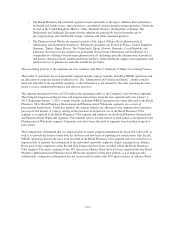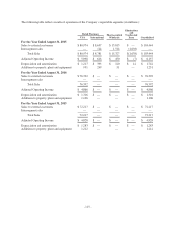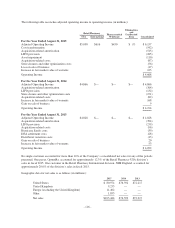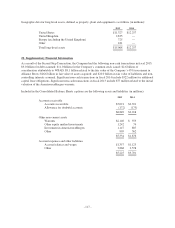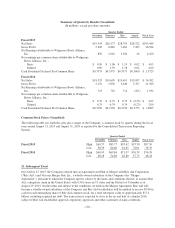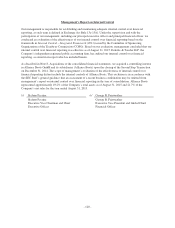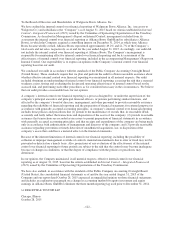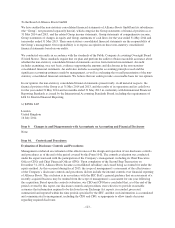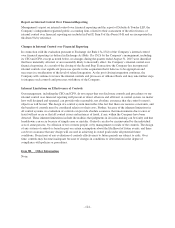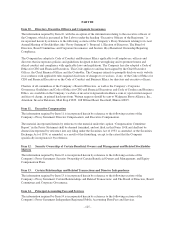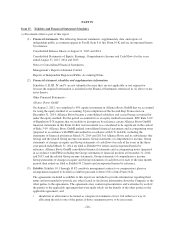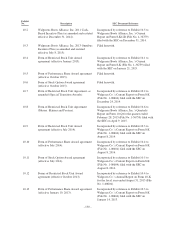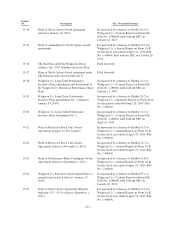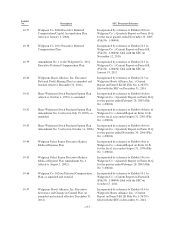Walgreens 2015 Annual Report Download - page 128
Download and view the complete annual report
Please find page 128 of the 2015 Walgreens annual report below. You can navigate through the pages in the report by either clicking on the pages listed below, or by using the keyword search tool below to find specific information within the annual report.
Report on Internal Control Over Financial Reporting
Management’s report on internal control over financial reporting and the report of Deloitte & Touche LLP, the
Company’s independent registered public accounting firm, related to their assessment of the effectiveness of
internal control over financial reporting are included in Part II, Item 8 of this Form 10-K and are incorporated in
this Item 9A by reference.
Changes in Internal Control over Financial Reporting
In connection with the evaluation pursuant to Exchange Act Rule 13a-15(d) of the Company’s internal control
over financial reporting (as defined in Exchange Act Rule 13a-15(f)) by the Company’s management, including
its CEO and CFO, except as noted below, no changes during the quarter ended August 31, 2015 were identified
that have materially affected, or are reasonably likely to materially affect, the Company’s internal control over
financial reporting. As a result of the closing of the Second Step Transaction, the Company has incorporated
internal controls over significant processes specific to the acquisition that it believes to be appropriate and
necessary in consideration of the level of related integration. As the post-closing integration continues, the
Company will continue to review the internal controls and processes of Alliance Boots and may take further steps
to integrate such controls and processes with those of the Company.
Inherent Limitations on Effectiveness of Controls
Our management, including the CEO and CFO, do not expect that our disclosure controls and procedures or our
internal control over financial reporting will prevent or detect all errors and all fraud. A control system, no matter
how well designed and operated, can provide only reasonable, not absolute, assurance that the control system’s
objectives will be met. The design of a control system must reflect the fact that there are resource constraints, and
the benefits of controls must be considered relative to their costs. Further, because of the inherent limitations in
all control systems, no evaluation of controls can provide absolute assurance that misstatements due to error or
fraud will not occur or that all control issues and instances of fraud, if any, within the Company have been
detected. These inherent limitations include the realities that judgments in decision-making can be faulty and that
breakdowns can occur because of simple error or mistake. Controls can also be circumvented by the individual
acts of some persons, by collusion of two or more people, or by management override of the controls. The design
of any system of controls is based in part on certain assumptions about the likelihood of future events, and there
can be no assurance that any design will succeed in achieving its stated goals under all potential future
conditions. Projections of any evaluation of controls effectiveness to future periods are subject to risks. Over
time, controls may become inadequate because of changes in conditions or deterioration in the degree of
compliance with policies or procedures.
Item 9B. Other Information
None.
- 124 -


